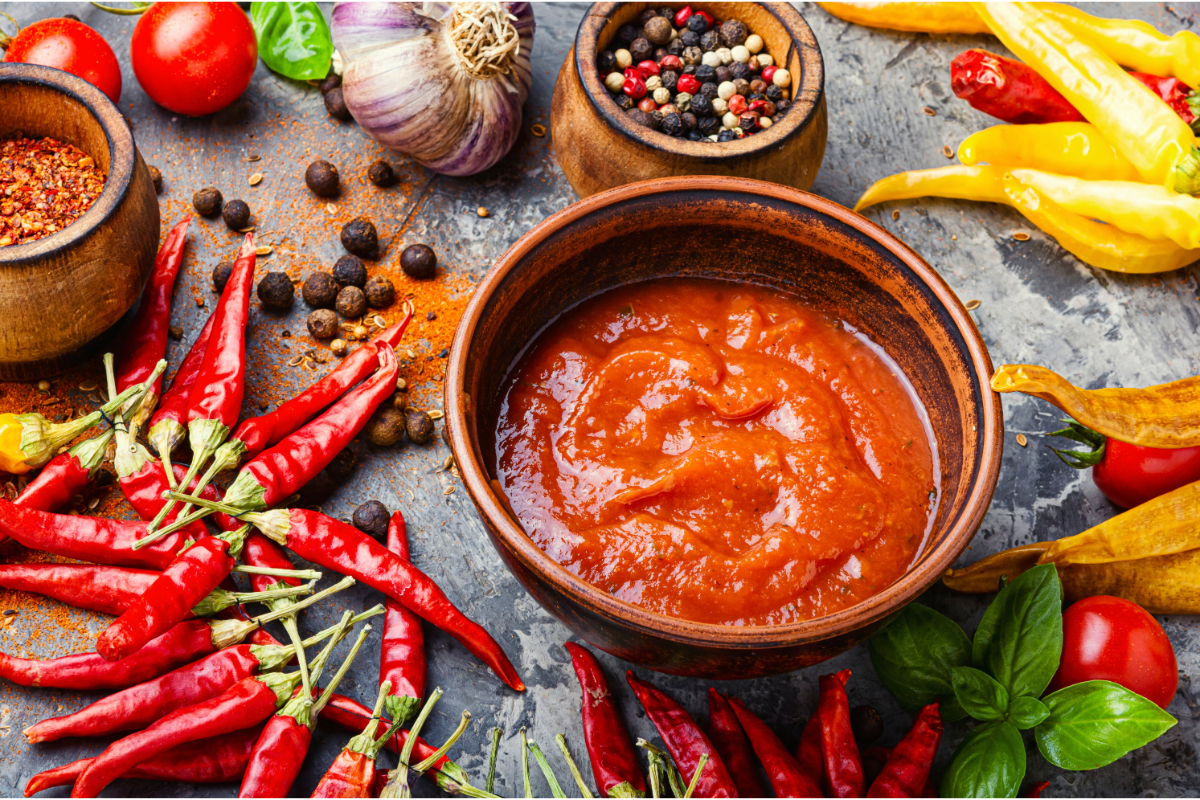Dive Into the World of Picante Sauce
Welcome to the flavorful journey of exploring what Picante Sauce is made of. This beloved condiment, integral to Tex-Mex cuisine, is renowned for its vibrant blend of spices, vegetables, and, notably, various types of peppers. Whether you’re a seasoned chef or a curious foodie, understanding the components of Picante Sauce will enhance your cooking and dining experiences. In this guide, we’ll uncover the traditional and modern twists in making Picante Sauce, explore its uses in different dishes, and discover why kitchens worldwide cherish it. Let’s embark on this spicy adventure that promises to add zest to your culinary repertoire!
Introduction to Picante Sauce
Definition and Origin of Picante Sauce
Picante Sauce, a cornerstone of Tex-Mex cuisine, gains fame for its spicy and tangy flavor profile. Traditionally, it’s a smooth, less chunky version of salsa, made primarily from tomatoes, onions, and various chili peppers. The word ‘picante’ translates directly to ‘spicy’ or ‘hot,’ which perfectly captures the essence of the sauce’s robust and lively nature.
Mexican American communities in the southwestern United States first created Picante Sauce. They crafted this condiment to add heat and depth to everyday meals using locally available ingredients. This sauce has evolved through generations, becoming a versatile staple in both Mexican and American households.
Cultural Significance of Picante Sauce
Beyond its culinary uses, Picante Sauce carries cultural significance that mirrors the fusion of Mexican and American culinary traditions. It acts as a bridge between different culinary practices and tastes, reflecting a blend of cultures. Over the years, Picante Sauce has not only been a favorite in Tex-Mex cuisine but has also gained international popularity, making its way into various dishes that crave a touch of heat and tanginess.
In the following sections, we will delve into the specific ingredients that compose Picante Sauce, explore its preparation methods, and uncover the various ways it can transform simple dishes into flavorful creations. Stay tuned as we spice up our exploration into the tangy world of Picante Sauce. For more detailed recipes and variations, check out Epicurious’s collection on picante sauce recipes.
Frequently Asked Questions about Picante Sauce
How Long Can You Keep Homemade Picante Sauce?
You can refrigerate homemade Picante Sauce in an airtight container for up to one week. For longer storage, freezing it properly can preserve it for up to three months. Always ensure the sauce is stored correctly to maintain its quality and prevent spoilage.
How Can You Make Picante Sauce Milder?
To reduce the spiciness, use fewer hot peppers, remove their seeds and veins where the heat is concentrated, or opt for milder pepper varieties. This customization allows you to enjoy the sauce with less heat.
Which Peppers are Best for Authentic Picante Sauce?
Jalapeños are commonly used for a milder sauce, while serrano or habanero peppers are great for adding more spice. The choice of peppers can dramatically influence the sauce’s heat level and flavor profile.
Is It Possible to Substitute Fresh Tomatoes with Canned Ones?
Yes, canned tomatoes can substitute for fresh ones. They are convenient and can enhance the flavor, especially if they come pre-seasoned. Just be sure to adjust the seasoning in your sauce accordingly.
Is Picante Sauce Gluten-Free?
Typically, Picante Sauce is gluten-free as it consists mainly of vegetables and spices. However, check the labels of any pre-packaged ingredients for hidden gluten, particularly if you use store-bought chili powders or canned tomatoes.
Can You Use Picante Sauce as a Marinade?
Yes, Picante Sauce makes a fantastic marinade for meats and vegetables, adding a spicy and tangy flavor. Marinate the ingredients in the sauce for a few hours before cooking to maximize the flavor infusion.
